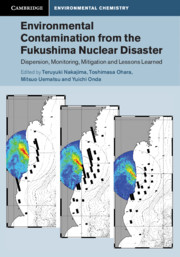 Environmental Contamination from the Fukushima Nuclear Disaster
Environmental Contamination from the Fukushima Nuclear Disaster Book contents
- Environmental Contamination from the Fukushima Nuclear Disaster
- Cambridge Environmental Chemistry Series
- Environmental Contamination from the Fukushima Nuclear Disaster
- Copyright page
- Contents
- Contributors
- Preface
- Acknowledgements
- Part I Transport of Radioactive Materials in the Environment
- Part II Development and Future Issues for the Infrastructure of Disaster Prevention
- Part III Lessons and Future Issues from the Fukushima Accident
- 10 Urgent Actions by Scientists
- 11 Emergency Actions and Messages Related to the Fukushima Accident
- 12 Recommendations for the Fukushima Project from Foreign Scientists
- Glossary
- Names of Locations
- Index
- References
11 - Emergency Actions and Messages Related to the Fukushima Accident
from Part III - Lessons and Future Issues from the Fukushima Accident
Published online by Cambridge University Press: 16 August 2019
- Environmental Contamination from the Fukushima Nuclear Disaster
- Cambridge Environmental Chemistry Series
- Environmental Contamination from the Fukushima Nuclear Disaster
- Copyright page
- Contents
- Contributors
- Preface
- Acknowledgements
- Part I Transport of Radioactive Materials in the Environment
- Part II Development and Future Issues for the Infrastructure of Disaster Prevention
- Part III Lessons and Future Issues from the Fukushima Accident
- 10 Urgent Actions by Scientists
- 11 Emergency Actions and Messages Related to the Fukushima Accident
- 12 Recommendations for the Fukushima Project from Foreign Scientists
- Glossary
- Names of Locations
- Index
- References
Summary
Fukushima University is the only national university in Fukushima Prefecture that is located near the earthquake and nuclear accident. The university provided much of the correspondence about the earthquake and the nuclear accident. Moreover, the highest dose rate from the radioactive material released into the environment by the nuclear accident was measured at the public facilities of the university. Putting aside the reality of crisis management, here we describe several thoughts for a safer society.
- Type
- Chapter
- Information
- Environmental Contamination from the Fukushima Nuclear DisasterDispersion, Monitoring, Mitigation and Lessons Learned, pp. 284 - 327Publisher: Cambridge University PressPrint publication year: 2019


